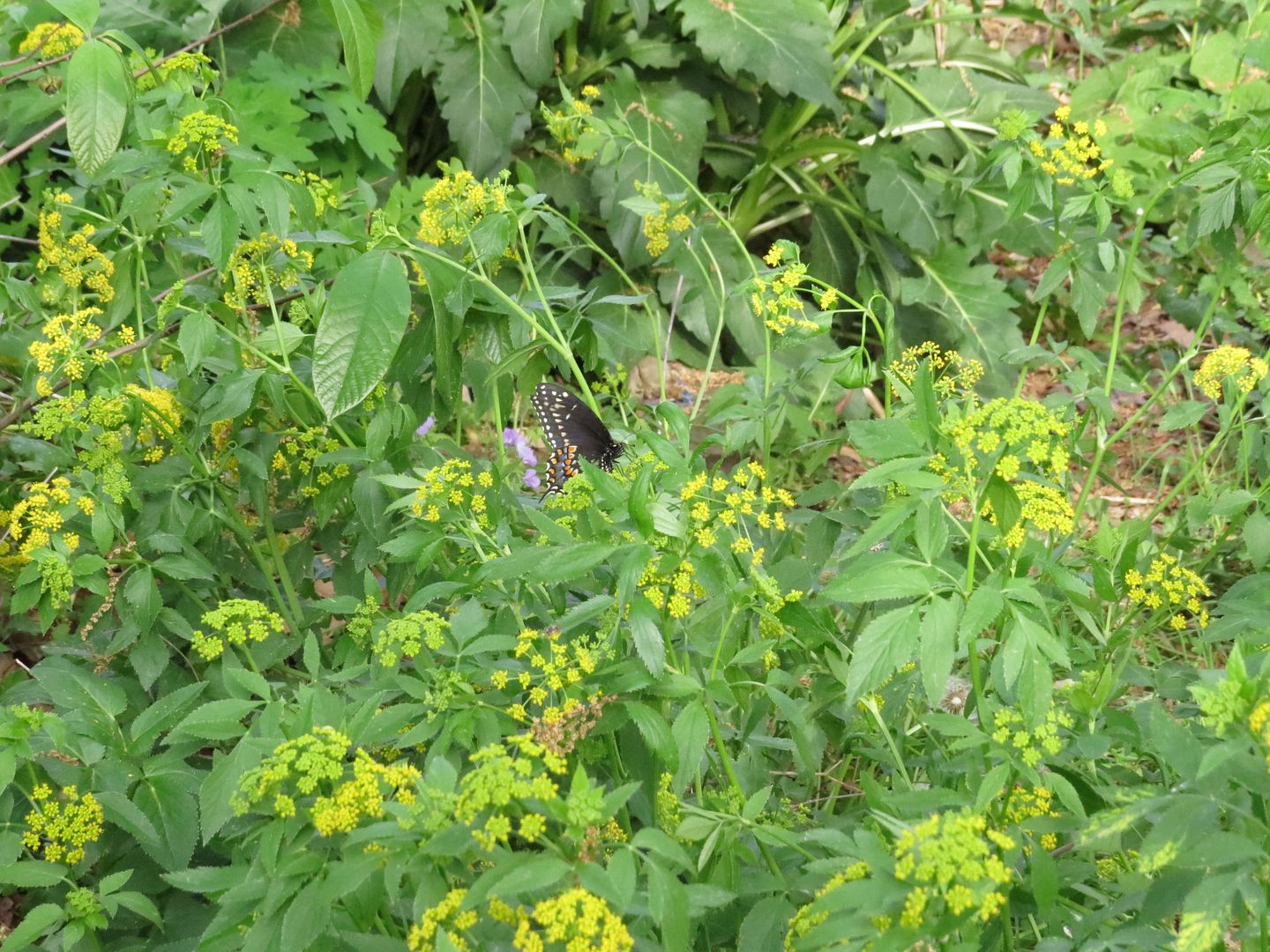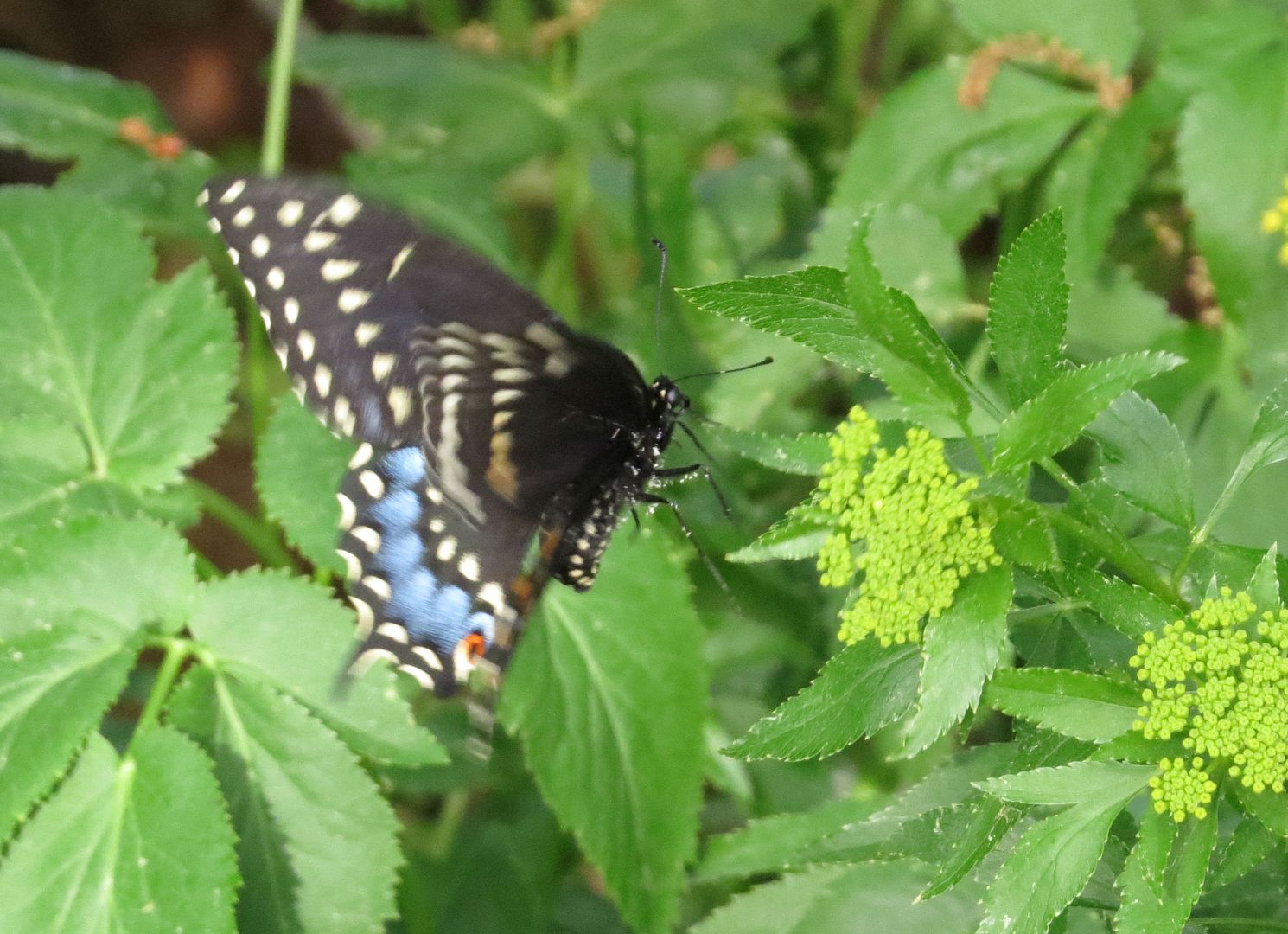Monday, May 11, 2015
Black Swallowtail Laying Eggs on Golden Alexander
When Native Plant Gardeners decide to add Golden Alexander to their landscape, they're often disappointed to see a lack of Black Swallowtails. Perhaps Monarchs boldly laying dozens of eggs all over Milkweed and their easy to spot black and white caterpillars spoil them. A couple of things are going on here.
Firstly, Black Swallowtails are native to North America, so much so that they're sometimes referred to as the American Swallowtail. Golden Alexander was their primary host plant among a few other members of the carrot family, but when western settlers brought with them delicious Parsley, Dill, and yet more members of the carrot family, suddenly the American Swallowtail had a lot more hosts to choose from. Parsley and Dill in particular were bread for their pungent odor and flavor, and likely possess more of the chemicals in the plant Black Swallowtails use to make themselves bitter tasting. Not only do the caterpillars mimic bird shit in the first few instars, but they want to taste like it too! This is likely why Parsley and Dill tend to be heavily favored as host plants.
Monarchs are down right poisonous to consume, and they want to go out of their way to show themselves off. Causing a mother bird to throw up the contents of her crop is one less meal her baby birds will get. It's a swift lesson and birds quickly learn not to bother with black and white caterpillars.
Golden Alexander has other pest problems such as Aphids. Parsley gets aphids too but not the same kind. These aphids are better about attracting Ants, which are more than happy to consume butterfly eggs, as well as young instars caterpillars. The plant itself also excretes extra floral nectar on its leaves which ants will "nectar scrape" for food, to further get ants crawling all over the plant. Golden Alexander is also a more open, airy plant, which wasps have an easier time exploring to hunt. Some types of parsley are dense with leaves.
One thing Golden Alexander can boast though is that it's a spring ephemeral. Seen here at 2 - 3' tall it's produced almost all its foliage for the year, whereas Parsley and Dill flower in late summer and autumn, and thus have quite a bit of growing to do. So Golden Alexander is usually a better choice as a spring host plant because even nursery born Parsley and Dill are barely this tall.
Admittedly I can only recall two instances when a female has bothered to lay eggs on our Golden Alexander patch in the past 5 years. I'd probably do better to plant something else in the patch but I keep the plants around all the same.
One thing I noticed was a preference to lay directly on the flower clusters as opposed to stems or leaves. There may be other reasons Golden Alexander is favored in the spring that I don't know about.
Either that or she's playing a clever game of Where's Waldo. Note the tiny egg planted among the flower buds.



